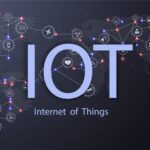Become an Ethical Hacking Pro: 10 Essential Tips to Secure Your Digital Life

Become an Ethical Hacking Pro: 10 Essential Tips to Secure Your Digital Life
1. Introduction to Become an Ethical Hacking Pro
Understanding the Concept of Ethical Hacking
Penetration testing, commonly referred to as ethical hacking or white-hat hacking, is the systematic probing of computer systems, networks, applications, and devices to find security flaws. In addition, they perform several activities with the permission of the system’s owner or organization to enhance the security posture of varied IoT devices comprised of the IT infrastructure.
The Importance of Ethical Hacking in Today’s Digital Landscape
In the modern digital environment, ethical hacking is essential to maintaining the security and reliability of computer networks, information systems, and data. The importance of ethical hacking has substantially increased as technology develops and permeates more areas of our life. In today’s digital environment, ethical hacking is essential for the following reasons:
- Identifying Vulnerabilities,
- Strengthening Cybersecurity Defenses,
- Protecting Sensitive Data,
- Preventing Financial Loss,
- Safeguarding Privacy,
- Compliance and Regulatory Requirements,
- Defending Against Advanced Threats,
- Building Trust,
- Incident Response Planning,
- Continuous Improvement, etc.
Differentiating Ethical Hacking from Unethical Hacking
It’s critical to distinguish between negative and ethical hacking. While malevolent hackers carry out illicit operations to steal from, alter, or damage systems and data, ethical hackers adhere to tight protocols and rules of engagement to enhance security. In the constant attempt to safeguard digital infrastructure and safeguard private data in a world that is becoming more linked, ethical hacking is essential.
2. The Fundamentals of Ethical Hacking
The Role of Ethical Hackers in Cybersecurity
Ethical hackers are essential to the discipline of cybersecurity because they help secure data, networks, and information systems from hostile attacks. Their knowledge and efforts assist firms in locating security flaws and aggressively fixing them.
Key Skills Required for an Ethical Hacker
A broad range of abilities, both technical and non-technical, are necessary to become an effective ethical hacker. Ethical hackers can evaluate and safeguard computer systems, networks, and applications with the help of these skills. The following are the main abilities needed to be an ethical hacker:
- Computer Networking Knowledge,
- Programming Skills,
- Operating System Familiarity,
- Information Security Concepts,
- Web Application Security,
- Penetration Testing Tools,
- Reverse Engineering,
- Social Engineering Skills,
- Problem-solving and Analytical Skills,
- Ethical Mindset,
- Continuous Learning
- Communication Skills,
- Curiosity and Persistence,
- Legal Knowledge, and many more.
Certifications and Training for Ethical Hacking
For people with an interest in a career in ethical hacking, there are numerous training and certification programs available throughout the world. However, these accreditations and training programs vouch for your ethical hacking ability and certify your skills to prospective employers. A few of the finest and most renowned training programs and certifications for ethical hacking are listed below:
- Certified Ethical Hacker (CEH),
- CompTIA Security+,
- Offensive Security Certified Professional (OSCP),
- Certified Information Systems Security Professional (CISSP),
- 1 Year Diploma in Cyber Security Course by Craw Security, etc.
All in all, you can have the training of these all above-mentioned courses at Craw Security, the Best Cybersecurity Training Institute in India, which is also the Accredited Training Partner of numerous cybersecurity supergiants, such as Offensive Security, EC-Council, Red Hat Inc., CompTIA Technologies, CISCO Systems, etc., to deliver their world-class information security courses through its highly experienced educators.
3. Understanding Common Cybersecurity Threats
Overview of Cybersecurity Threat Landscape
The variety of threats, dangers, and weaknesses that are present in the digital world are referred to as the cybersecurity threat landscape since they are dynamic and always changing. It refers to a range of destructive actions and assaults carried out by online criminals to take advantage of flaws in software, networks, and computer systems. As new technologies are developed, the threat landscape is continuously shifting, and hackers modify their strategies to capitalize on these advancements.
Types of Cyber Attacks Explained
Here are the main types of Cyber Attacks:
| Phishing Attacks | Phishing attacks entail duping people into divulging private data, like login credentials, credit card information, or passwords. |
| Malware Attacks | Viruses, worms, Trojan horses, ransomware, and other dangerous software are all examples of malware, often known as malicious software. Malware is made to hack into systems and compromise them, steal data, sabotage operations, or demand money from unwitting victims. |
| DDoS Attacks | DDoS attacks flood the targeted network architecture or servers with excessive traffic, rendering services inaccessible to authorized users. |
| Ransomware Attacks | A form of software known as ransomware encodes the data of a victim or locks them out of their computers and then demands payment in exchange for the decryption key or to regain access. |
| Social Engineering Attacks | Utilizing social engineering techniques, individuals are tricked into taking specific activities or disclosing private information. |
| Insider Threats | Insider threats are assaults or security lapses started by someone working for a company who has possession of confidential data and use that access maliciously. |
4. Reconnaissance and Footprinting
The earliest stages of hacking involve reconnaissance and footprinting, during which attackers learn as much as they can about a target system, network, or organization. Identifying the intended victim’s weaknesses and possible entry points during these stages is essential for the attacker to better effectively plan their assault. In the case of ethical hacking, reconnaissance, and footprinting are carried out by security experts with the owner’s consent to find and proactively fix security flaws.
Moreover, there are two types of Reconnaissance:
- Active Reconnaissance,
- Passive Reconnaissance.
Apart from reconnaissance, there are 4 types of footprinting tactics:
- Network Footprinting,
- Website Footprinting,
- People Footprinting, and
- Competitive Intelligence.
5. Scanning and Enumeration
Following reconnaissance and footprinting, scanning, and enumeration are essential phases in the ethical hacking procedure. In these stages, the target system or network is aggressively probed to learn more specifics regarding its open ports, services, and potential weaknesses. Scanning and enumeration are tools used by ethical hackers to find vulnerabilities and potential entry points, such as the following:
There are 4 types of scanning examples:
- Port Scanning,
- Network Scanning,
- Vulnerability Scanning, and
- Banner Grabbing.
Moreover, 3 types of Enumeration are there, as mentioned below:
- Service Enumeration,
- User Enumeration,
- Network Enumeration, etc.
6. Vulnerability Assessment and Penetration Testing (VAPT)
In general, vulnerability assessments give a complete overview of the security posture of the firm by looking for identified weaknesses and configuration errors. Penetration testing, on the other hand, goes further by actually exploiting flaws to ascertain the system’s resistance to actual attacks.
Both VAPT processes are essential for firms to identify their safety risks and put in place the necessary safeguards to secure their data and systems. They work best together.
7. Wireless Network Security
Understanding Wireless Network Vulnerabilities
Users may connect to the web and share information without using physical cords because of the simplicity and adaptability that wireless networks offer. Wireless networks do, however, also offer certain weaknesses that attackers can take advantage of. To successfully secure wireless networks, it is essential to comprehend these vulnerabilities.
Securing Wi-Fi Networks
To stop unwanted access, data breaches, and other cyber dangers, Wi-Fi networks must be secured. Strong security measures are put in place to safeguard sensitive data and guarantee a secure and dependable wireless network environment. Several actions are crucial for securing Wi-Fi networks:
- Change Default Credentials,
- Enable Encryption,
- Use Strong Wi-Fi Passwords,
- Disable Wi-Fi Protected Setup (WPS),
- Change SSID Name,
- Enable Network Encryption and Authentication,
- Implement MAC Address Filtering,
- Disable Remote Management,
- Disable SSID Broadcasting,
- Keep Firmware Updated,
- Physical Security,
- Use a Guest Network,
- Disable Universal Plug and Play (UPnP)
- Enable Logging and Monitoring, etc.
Best Practices for Wireless Security
For the sake of sensitive data protection, privacy protection, and preventing illegal access, wireless networks must be secured. The most effective procedures for wireless security are listed below:
- Enable Strong Encryption,
- Use Complex Wi-Fi Passwords,
- Change Default Credentials,
- Disable Wi-Fi Protected Setup (WPS),
- Change Default SSID Name,
- Use Strong Authentication Methods,
- Implement MAC Address Filtering,
- Disable Remote Management,
- Regularly Update Firmware,
- Physical Security, and many more.
8. Web Application Security

Web application security is the process of defending web applications against numerous online dangers and weaknesses. Web applications are vulnerable to a variety of potential assaults since they are accessed through the internet. To guarantee the safety, integrity, and accessibility of data as well as to stop illicit use and data breaches, web applications must be secured.
9. Network Security and Firewalls
The cybersecurity plan of a business must include firewalls and network security. They are essential in preventing unwanted access, cyberattacks, and other security risks for networks and data.
Implementing Network Security Measures
Network security includes all of the precautions required to shield a network and its resources from potential attacks and weaknesses. The safety, integrity, and accessibility of data and resources are the main goals of network security.
To protect the information of an organization, infrastructure, and resources from possible cyber threats, security measures for the network must be implemented. Consider the following important network security measures:
- Firewalls,
- Network Segmentation,
- Virtual Private Networks (VPNs),
- Intrusion Detection and Prevention Systems (IDPS),
- Network Access Control (NAC),
- Strong Authentication,
- Regular Patch Management,
- Secure Wi-Fi Networks,
- Implement DNS Security,
- Data Encryption, etc.
How Firewalls Work to Protect Networks
A firewall is a piece of hardware or software for network security that keeps track of and regulates network traffic that comes into and leaves the network based on pre-established security rules. Among an established internal network and an unreliable external network, like the internet, it serves as a barrier. By enforcing access regulations and filtering network traffic, firewalls, which can be either hardware- or software-based, are essential for protecting networks.
Choosing the Right Firewall for Your Needs
Several companies are there in the market that offer the right kind of firewall services to all the organizations whosoever is interested in taking their services. In addition, there are several types of firewalls, such as the following:
- Packet Filtering Firewalls,
- Stateful Inspection Firewalls,
- Proxy Firewalls,
- Next-Generation Firewalls (NGFW), etc.
10. Cryptography and Data Encryption
Cryptography:
The study of secure communication, known as cryptography, employs methods to encrypt data so that only authorized parties may decipher it. To guarantee data security, several cryptographic methods and techniques are used.
Key Concepts in Cryptography:
- Encryption,
- Decryption,
- Cryptographic Keys,
- Symmetric Encryption,
- Asymmetric Encryption, etc.
Data Encryption:
Encoded data to preserve secrecy and block illegal access is known as data encryption. Only those with the proper decryption key may restore encrypted data to its genuine readable state. Encrypted data is changed into a format that is unreadable.
Uses of Data Encryption:
- Secure Communication,
- Data Storage,
- Device Security,
- Compliance and Privacy, etc.
11. Social Engineering Countermeasures
Intruders may utilize social engineering to trick others into disclosing private information, carrying out certain tasks, or getting over security measures. Organizations and people can use a variety of countermeasures to guard against social engineering attacks in order to raise awareness and lower the chance of falling prey to such deceptive strategies. The following are some potent social engineering defenses:
- Security Awareness Training,
- Phishing Simulations,
- Strong Authentication,
- Secure Password Policies,
- Access Control and Least Privilege,
- Suspicious Email Handling,
- Reporting Mechanisms,
- Policies and Procedures,
- Physical Security Measures,
- Vendor and Third-Party Assessments,
- Information Classification and Labeling,
- Employee Verification Protocols,
- Social Media Privacy Settings,
- Incident Response Plan, etc.
12. Incident Response and Disaster Recovery
A company’s overall continuity of operations and cybersecurity strategy must include incident response and disaster recovery.
Incident Response:
An incident, frequently referred to as a security breach or hack, is managed using a systematic process called incident response (IR). The primary goal is to address the issue in a manner that limits harm and shortens the time and expense of recovery. The following phases are typical for an incident response plan:
- Preparation,
- Identification,
- Containment,
- Eradication,
- Recovery, and
- Lessons learned.
Disaster Recovery:
Business continuity planning also referred to as BCP, is an element of disaster recovery (DR). It emphasizes returning an IT infrastructure and systems to operational status following a catastrophe. Natural disasters (such as a flood or earthquake) or man-made ones (such as a cyberattack or hardware malfunction) both qualify as disasters. A few essential steps in disaster recovery planning are:
- Risk Assessment,
- Recovery Planning,
- Implementation,
- Testing and Maintenance,
- Training.
13. Protecting Mobile Devices
In the modern world, where these devices carry a great deal of our data, both personal and professional, securing mobile devices from dangers is crucial. The following are some essential tactics and recommended procedures for ensuring mobile device security:
- Regular Updates,
- Install Trustworthy Apps,
- Enable Security Features,
- Be Wary of Wi-Fi and Bluetooth,
- Beware of Phishing Attempts,
- Remote Wipe,
- Back-Up Your Data,
- Antivirus Software,
- Limit Sharing Your Location,
- Be Cautious with Permissions, etc.
14. Internet of Things (IoT) Security
Given that Internet of Things (IoT) devices are becoming increasingly susceptible to cyberattacks; hence, security for IoT devices is a major problem. These gadgets, which range from industrial sensors and smart city infrastructure to smart home appliances like refrigerators and thermostats, frequently don’t have strong built-in protection.
Below mentioned are some of the premium best practices for IoT security:
- Change Default Passwords,
- Regular Updates
- Network Segmentation
- Disable Unnecessary Features,
- Use Encryption
- Limit IoT Device Privileges,
- Choose IoT Devices Carefully,
- Security Awareness and Training,
- Incorporate IoT security in risk management,
- Implement Security Standards and Regulations, etc.
15. Safeguarding Personal Data and Privacy
In the innovative age of technology, safeguarding personal information and privacy is essential since private information can be used inappropriately in a variety of ways. Here are some guidelines for protecting your privacy and personal information:
- Use Strong, Unique Passwords,
- Enable Multi-Factor Authentication (MFA),
- Regularly Update Software,
- Be Cautious with Personal Information,
- Use Encryption,
- Beware of Phishing Attempts,
- Use Secure Networks,
- Regularly Check Privacy Settings,
- Limit the Use of Personal Information in Security Questions,
- Regularly Monitor Your Accounts, etc.
16. Building a Career in Ethical Hacking
It can be difficult and lucrative to develop a career in ethical hacking, commonly referred to as penetration testing or white-hat hacking. In this profession, system vulnerabilities must be identified and fixed before malevolent hackers (black-hat hackers) can take advantage of them. Here are some actions you can do to develop an ethical hacking career:
- Gain a Strong Foundation in IT,
- Learn to Program,
- Earn Relevant Certifications,
- Understand the Legal and Ethical Implications,
- Hands-On Practice,
- Keep Learning,
- Networking,
- Build a Portfolio, etc.
FAQs
About Become an Ethical Hacker
1: What is the difference between ethical hacking and illegal hacking?
Both unlawful or, you can say, illegal, sometimes known as black-hat hacking, and ethical hacking involve scanning systems for flaws and weaknesses. Their intentions, legality, and authorization serve as the main dividing lines between the two.
2: How can ethical hacking help organizations improve their security?
Enhancing a business’s security through ethical hacking is essential. Below mentioned are some tactics in this genre:
- Identifying Vulnerabilities,
- Simulating Cyber Attacks,
- Risk Assessment,
- Protection of Customers and Reputation,
- Compliance,
- Training and Awareness,
- Continuous Improvement, etc.
3: Which certifications are beneficial for aspiring ethical hackers?
The following certifications are genuinely beneficial for aspiring ethical hackers:
- Certified Ethical Hacker (CEH),
- Offensive Security Certified Professional (OSCP),
- CompTIA PenTest+,
- Certified Information Systems Security Professional (CISSP),
- Global Information Assurance Certification (GIAC) Penetration Tester (GPEN),
- Certified Information Security Manager (CISM),
- Certified Security Analyst (ECSA), etc.
4: What are some common signs of a phishing email?
Cybercriminals frequently use phishing emails to deceive victims into disclosing personal data, like passwords or credit card details. The following are some typical indicators that an email may be a phishing attempt:
- Unexpected Requests,
- Urgency,
- Poor Grammar and Spelling,
- Suspicious Links,
- Generic Greetings,
- Unfamiliar Sender,
- Too Good to Be True,
- Unexpected Attachments,
- Request for Money,
- Inconsistencies in Email Addresses, Links & Domain Names, etc.
5: How do I secure my home Wi-Fi network from potential attacks?
Here are the following steps that you may take for potential attacks:
- Change the Default Router Password,
- Use a Strong Encryption Method,
- Change Your Network’s SSID,
- Set Up a Guest Network,
- Keep Your Router Firmware Up to Date,
- Disable Remote Management,
- Use a Strong Wi-Fi Password,
- Enable Network Encryption,
- Disable WPS,
- Use a Firewall,
- Limit WPA2/WPA3 Reassociation,
- Regularly Check Connected Devices, etc.
6: Can you recommend any open-source tools for vulnerability assessment?
Yes, the following are some recommendations for open-source tools for vulnerability assessment:
- OpenVAS (Greenbone Vulnerability Management),
- Nessus Essentials,
- Nikto,
- Wireshark,
- Metasploit Framework,
- OWASP ZAP (Zed Attack Proxy),
- Nmap (Network Mapper), etc.
7: What steps should I take if my organization experiences a data breach?
Any firm may find dealing with a data breach to be challenging, but taking the right action in the aftermath is essential to minimizing the harm. A broad step-by-step method for handling a data breach is provided here:
- Incident Identification,
- Containment and Eradication,
- Assess the Impact and Damage,
- Notification,
- Investigation and Analysis,
- Recovery and Restoration,
- Review and Update Security Policies,
- Ongoing Monitoring,
- Employee Training, etc.
8: Is it necessary to encrypt data on my personal computer?
Depending on the type of data involved and your specific requirements for security and privacy, you may need to encrypt information stored on your computer. Encryption is a useful measure you can take to improve your data security, nevertheless, generally speaking.
9: How can social engineering attacks be prevented in the workplace?
By implementing the following measures of security best practices, social engineering attacks can certainly be prevented in the workplace:
- Employee Education and Training,
- Implement Policies and Procedures,
- Regular Communication,
- Multi-factor Authentication (MFA),
- Anti-phishing Measures,
- Incident Reporting System,
- Regular Security Audits,
- Simulated Attacks, etc.
10: What are the ethical hacking career prospects for the next decade?
The need for experts who can safeguard networks, computers, and data is anticipated to increase as our reliance on technology increases. In this environment, ethical hackers—also referred to as white hat hackers or penetration testers — are essential. Professionals are tasked with identifying and resolving security flaws before nefarious hackers may take advantage of them.
The following are some trends and job opportunities for ethical hackers in the upcoming ten years:
- Growing Demand,
- Increasing Complexity,
- Internet of Things (IoT) Security,
- Cybersecurity Legislation,
- Higher Salaries,
- More Training Opportunities,
- Increasing Threat Landscape, etc.
Conclusion
In the bottom line, we would like to say that we have tried our level best to deliver you the 10 Essential Tips to Secure Your Digital Life by becoming an ethical hacking professional. Thus, if you sincerely require to take a serious concern over this, then you can seek admission in the 1 Year Cyber Security Diploma by Craw Security, the Best Cybersecurity Training Institute in India, to deliver all authentic information security courses with full professionalism and efficiency.
In this regard, you just need to give us a call at +91-9513805401.
















